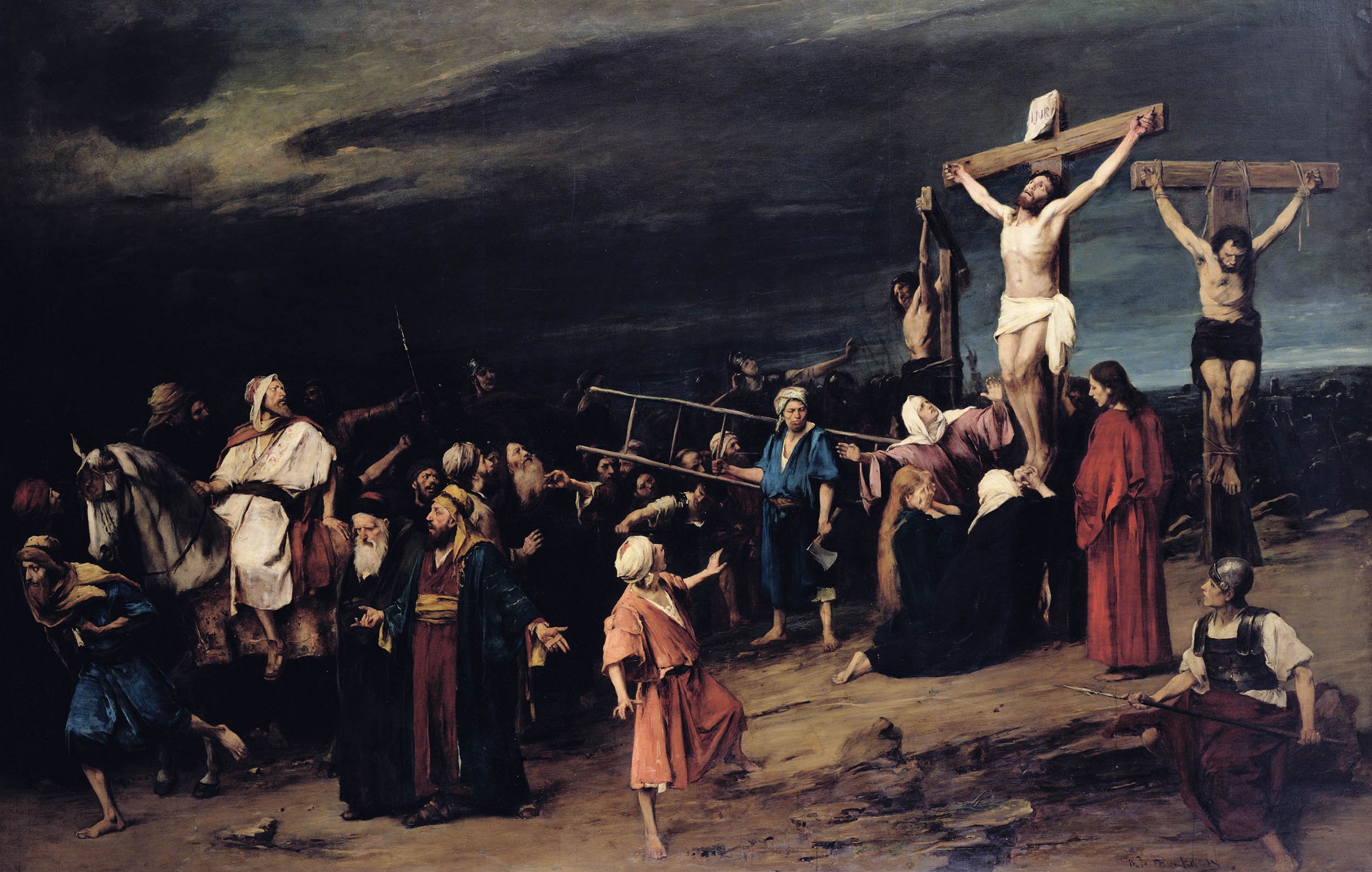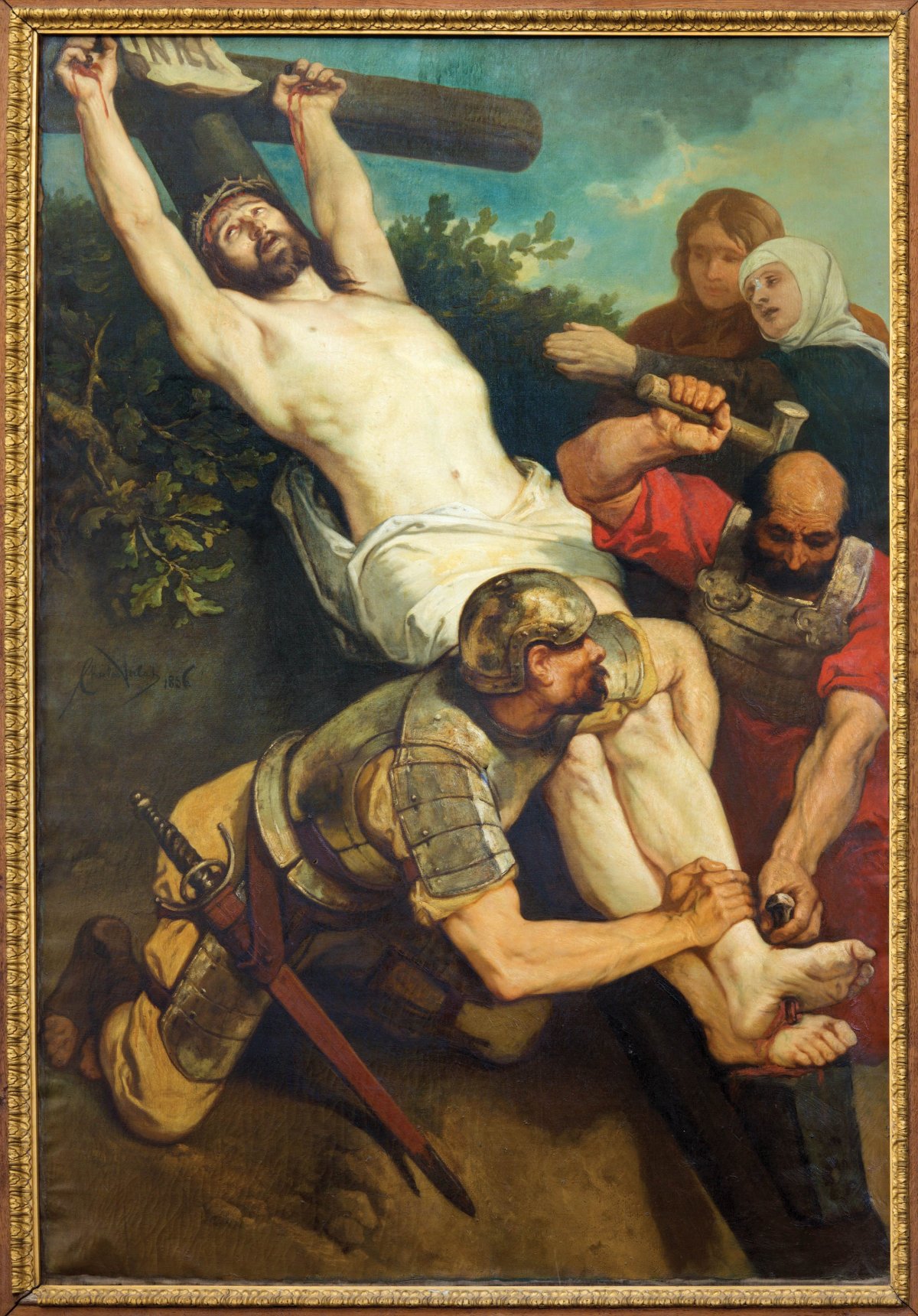
🎙️ Voice is AI-generated. Inconsistencies may occur.
Jesus stood accused of sedition, not blasphemy—a civil crime, not a religious one. Rome's punishment was a painful, and visible, death by crucifixion. In the age of Roman domination, only Rome crucified. And they did it often. The two men who were killed along with Jesus are identified in some translations as "thieves," but the word can also mean "insurgents," supporting the idea that crucifixion was a political weapon used to send a message to those still living: Do not stir dissent or this will be the result.
It was a popular method of dispatching threats to the empire. "Romans practiced both random and intentional violence against populations they had conquered, killing tens of thousands by crucifixion," says New Testament scholar Hal Taussig, who is with the Union Theological Seminary in New York.
New York Times bestselling author Stephen Mansfield described crucifixion in a 2014 article as "an act of state terror." By the time crucifixion was a staple of the Roman Empire, its justice system had employed strangling, stoning, burning and even boiling in oil as methods of torture and execution. But crucifixion sent a more lingering message.
Jesus would then have been part of this show of power by the Roman Empire. There is also evidence that Jesus's arrest was part of a broader pattern of violence and fear of revolt that particular Passover circa A.D. 33. Barabbas's presence fuels the theory that Pilate was concerned with rebels and had already confronted an insurrection before he interrogated Jesus. Some scholars even suggest that the two crucified on either side of Jesus may have been co-conspirators of Barabbas. Clear evidence of the political nature of Jesus's execution—that Pilate and the high priest were ridding themselves of a "messiah" who might disrupt society—is the sign Pilate demanded be affixed to Jesus's cross: a scornful signal to the crowds that this death awaits any man the pilgrims might proclaim "the king of the Jews."
The Physical Horror of Crucifixion
"Crucifixion was a method of torture—not just putting to death. It was a particularly cruel and unusual form of disposing of people," says Jeremy Ward, head of the physiology department at King's College London. Each aspect of death on the cross had its particular ghastliness, some less accurately depicted by artists than others. The discovery of the bones of a crucified man, now in a museum in Israel, points to the fact that the feet were likely not stacked on the front of the cross. In the remains, the nail goes through the heel, leading to the conclusion that the crucified were more likely nailed with their ankles on either side of the cross's mast. But, says Ward, some artists' interpretations have been especially accurate. "The classic position of the hands [in paintings] is that they are clenched. A neurologist suggested that the clench was due to the fact that, if the nail went through, it basically caused neuropathy, or damage to the median nerve, which controls the thumb and the fingers—so they would indeed clench in a particular way," adds Ward. "That wouldn't have contributed to death, but it wouldn't have been nice."
How the crucifixion itself was conducted made a difference. "From contemporaneous writings, it seems that they're [being done] at all angles. They could be upside down, tied up, nailed up. It was almost up to the people doing it; there didn't appear to be a standard form," says Ward. Upside-down would be the quickest means of dispatch, he adds. "The blood goes to the head and it's much more difficult to maintain blood pressures, and there'd be huge blood pressure in the heart," says Ward. "One of the many possible causes of death is that you get heart rupture and the heart stops pumping. And being upside-down would certainly speed that up."

Jesus is said to have expired after six hours. In addition to positioning on the cross, Ward says length of survival also depended on the health of the individual being crucified and on the severity of their treatment beforehand. "They were routinely whipped, then had to carry at least part of the cross to the site of execution. By the time they get there, they're already pretty traumatized. Probably lost some blood," says Ward. For some, it could be a day or more. How they were treated once installed on the cross had significant effect, as well. "You have to maintain the weight of the body on the legs, so that the weight on the arms isn't too much, so you can breathe properly. Gradually the exhaustion gets worse and worse and you can't keep the weight up," adds Ward. "And it is known that the guards would break the legs in order to hasten death sometimes." So was the case with those on either side of Jesus, according to the gospels.
But breathing wouldn't have been the only difficulty. "Someone could die because the heart stops due to arrhythmias and irregular beats, which are not meant to be there, so the heart doesn't pump properly. They would have been sweating in the hot sun. They were probably very hot. Or hypothermic, depending on where it was. And you could end up with the blood volume going down because they've lost blood from the whipping, the nails and just not having enough fluid. That would eventually lead to death from hypoglycemic shock," details Ward. "A hematologist named Brenner in 2005 suggested that it could be a blood clot forming in the lung as the result of trauma."
And what of the blood and water spilling from Jesus's side? Ward comes down on the side of physiological accuracy. "If you get a buildup of pressure, which can happen in heart failure and other trauma, you get clear fluid in the lungs," says Ward. It would have poured out if the legionnaire had lanced Jesus's lungs, he adds. "It's exactly the same process as when you stand up for a long time and your legs swell—the fluid goes into the tissues and makes them swell. The same thing can happen in the lungs, which is why patients with heart failure complain of being breathless. Their lungs become stiff and, in the worst cases, their airways start to fill with fluid so they can't exchange gasses. It's called pulmonary edema."
Was that the root cause of Jesus's death, then? "It was probably a combination of factors," Ward demurs. "The bottom line is that it was just a horrible way to kill someone. And it was meant to be."
This article appears in the Newsweek's new book, "Jesus: Rediscovering the Mysteries Surrounding Christ's Resurrection," by Issue Editor Johnna Rizzo of Topix Media Lab.